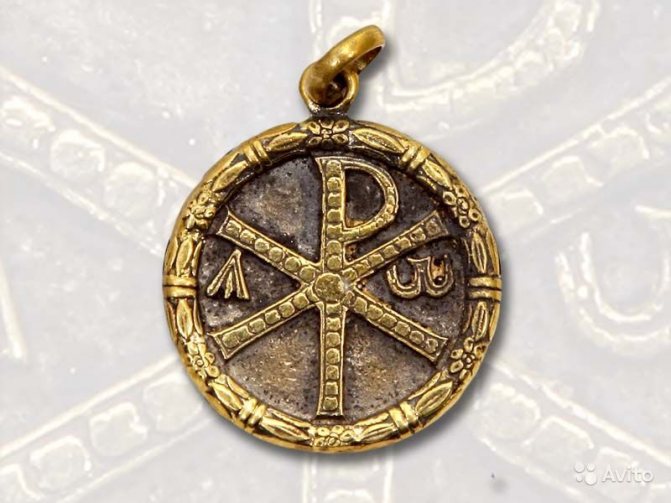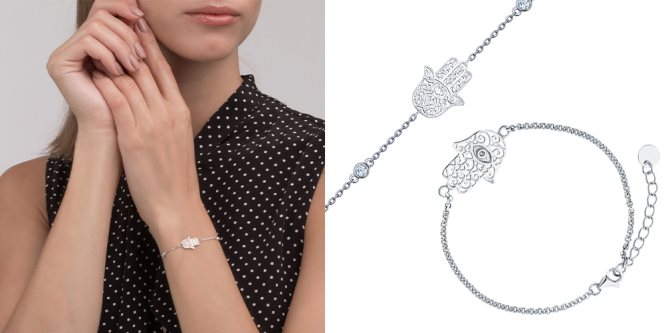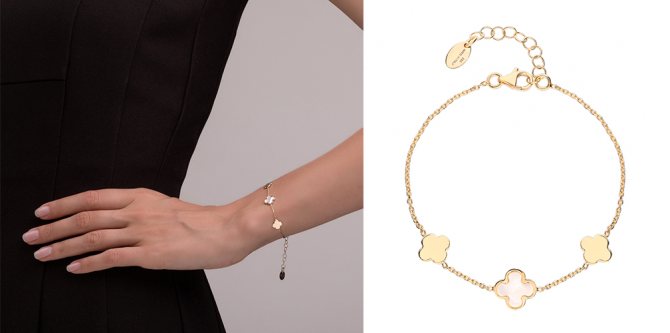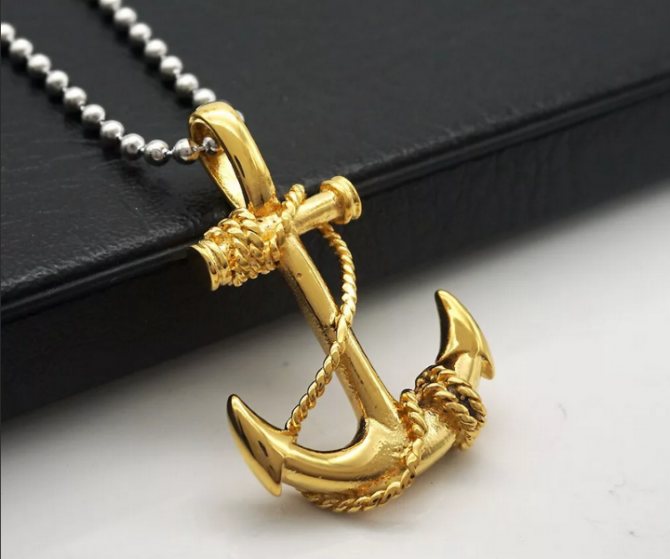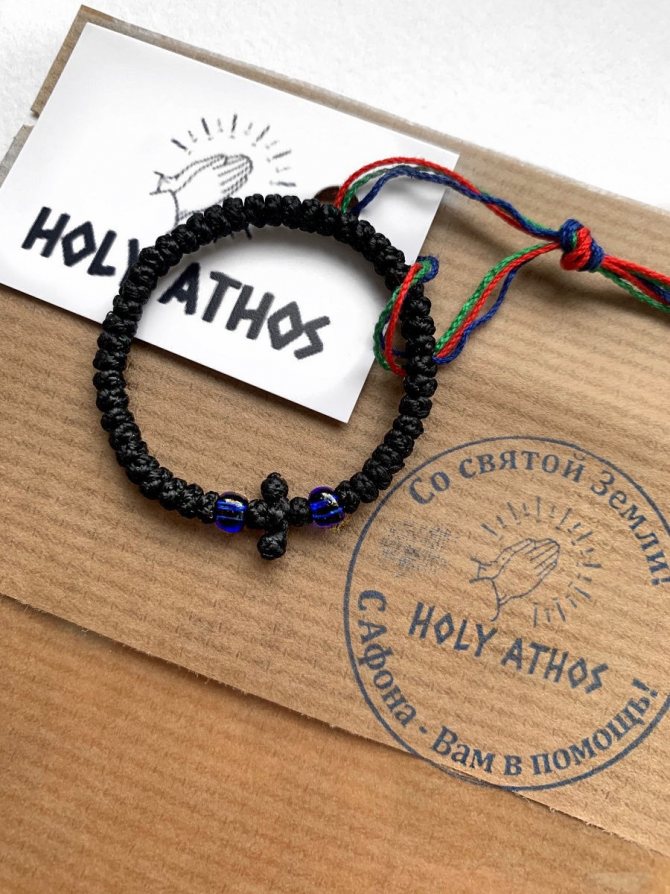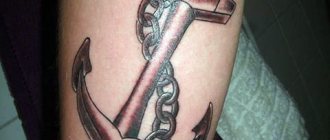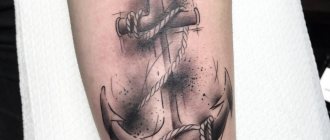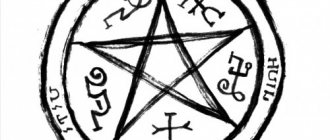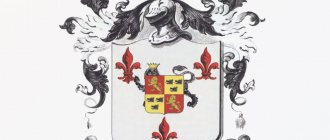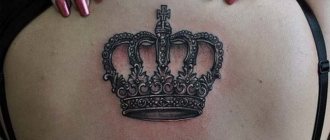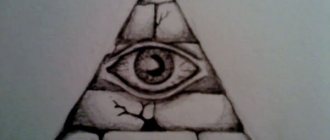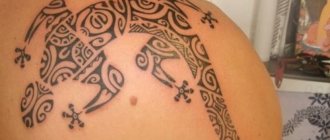| The peoples with the developed seafaring ... In ancient times, anchors were large stones, baskets of stones, bags of sand, stakes with metal hammered into them. With the advent of iron anchors, they were made in various shapes, trying to give them the appearance of paws, claws, and crossbars. The present form of the anchor was born relatively recently, in 1813. "The upper part of the image can be seen as a representation of a man (so it was, for example, with a tribe of Bessarabian gypsies) standing upright and stretching his arms upwards, that is, towards the sky (the points around him are understood as stars, "by which you can orient yourself at night and find the right road"). The part of the circle, the arc below, is a sign of the material world. The earth that brings forth man again and again." [bdgs] The symbolism comes from both the form and function of the anchor. The basic meanings are:
Divides the symbolism:
|
Antiquity
An emblem of the sea, a sail, a sailing ship, the sea gods (Poseidon/Neptune).
"Sacred anchor" (Greek ankyra hiera) - thrown in exceptional cases, in special danger.
Embossed, minted on coins:
- Many port cities (Alexandria, Antioch),
- On Roman coins from the reign of Titus.
It denoted an occupational affiliation in pre-Christian times on the graves of deceased sailors.
Anchor wrapped around a dolphin, along with the motto "Festina lente" - Latin.
"Hurry slowly (not hurrying)" - the emblem of the Roman Emperor Octavian Augustus.
The meaning of the red bracelet
Since ancient times, the color red symbolized life in all its diversity. This echoes the meaning of the red bracelet on his wrist - he is supposed to protect the life of the owner from the encroachments of enemies and otherworldly forces.
Bracelet with red thread - one of the oldest amulets known to mankind. And its origins should be sought in the Kabbalah (the ancient Jewish religious teachings). The left hand is a kind of gate through which negative energy is able to penetrate into a person's aura. And the red thread is designed to prevent this.
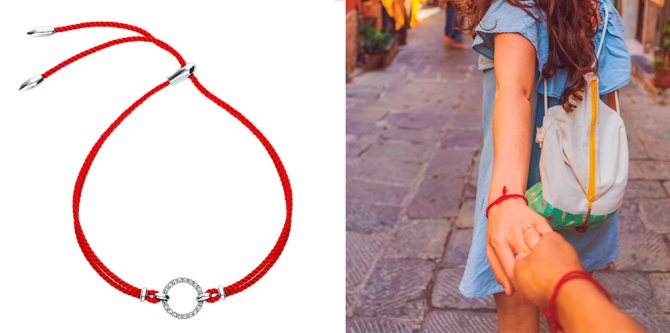
Silver bracelet with cubic zirconia (go to the catalog of SUNLIGHT)
According to popular beliefs, the most powerful protective effect has a red thread, which was brought from Israel, from the tomb of the foremother of all Jews Rachel. However, such a bracelet can be bought in a regular store or made by the hands of a loving person.
The bracelet should be put on your left hand and tied in seven knots, and the ceremony of putting it on should be performed by a person close to you with mental wishes of all the best.
Look closely at the hands of famous media persons: many of them have red threads, with or without pendants. People who are constantly in the spotlight, thus protecting themselves from the evil eye and hostile witchcraft.
In this way, a person who is always in the center of attention will be protected against the evil eye and hostile spells. Pendant can be made in the form of a cross, runes Futhark, Slavic or zodiacal symbol - the main thing that the owner believed in the sacred symbolism and saturate the pendant with its own energy.
Christianity
An early Christian symbol of hope and unwavering faith that can be found in catacomb art and on coins.
In early Christianity, the image of an anchor because of the cruciform shape was used as a camouflaged form of the cross (Crux dissimulata). Finds a close kinship with the symbols of the cross and trident with an additional allusion to the strong "fixation" of the new religious communities (in the Roman Empire, they were a small minority.) And their persistent faith in the chaos of the pagan environment.
As a symbol of hope, depicted next to such symbols as "good shepherd", fish, dove, palm tree, etc. on the walls of Roman catacombs, gems of seals. It was often accompanied by the word "Pax" - Latin for "world".
In grave images it was often framed with the image of fish or dolphins.
With a dolphin often means Christ crucified on a cross.
Warned converts to caution before pagan authorities, accustomed to circumlocution.
Depicted with a star and a crescent moon. ???
The meaning goes back to the Epistle to the Hebrews, which speaks of the immutability of faith in God: "Which to the soul is as a safe and strong anchor..." (Hebrews 6:19).
Attribute:
- Clement of Rome, St. - Pope, was thrown into the sea with an anchor around his neck;
- Nicholas of Myra, St. - bishop, patron saint of sailors;
- Placidius, St;
- St. John of Nepomuk, Sr.
In Greece, during the festival of the Awakening of Spring, there was a popular custom in which the clergyman threw a crucifix and an "anchor of salvation" into the sea.
Use of the amulet
Practitioners note that it matters the material from which the amulet is made:
- Amber. Help achieve success in a new endeavor. Keeps nervousness, fear and fear of failure. Give confidence that all will be successful in the new path, extinguish doubts and protect against misunderstanding of others.
- Agate. Suitable for people who have to communicate a lot. It will strengthen the charisma, increase the attractiveness, and add charm.
- Obsidian. It is a talisman of disclosure of one's inner potential. For those who are in a state of depression or creative stagnation, it will help to understand what must be changed in their lives, it will show unreleased or untapped talents, will help to get out of the bad luck. In addition, for those who are looking for their Teacher, the anchor is like a compass to show the way.
- Hematite. Give the owner courage, endow with courage. You will wear this amulet with a mask over your wrist, and it will protect you from all kinds of insults and attacks. The magical power of the anchor is enough to defeat circumstances, confrontations, hostility and envy.
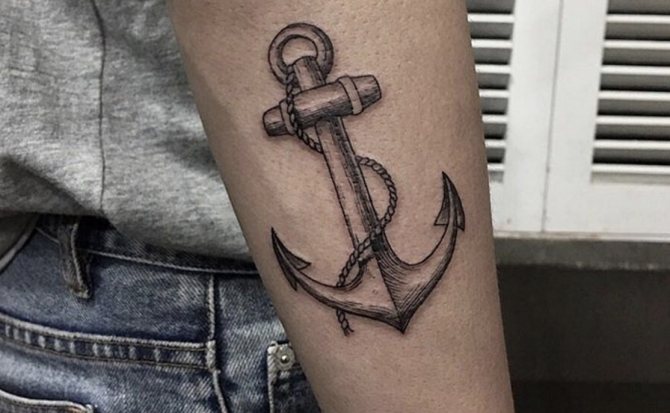

With the help of a tattoo, a man protects himself during a long voyage.
To this day, the wives of sailors embroidered maritime emblem on their clothes for protection on the voyage, give anchor pendants. But few things can compare to a talisman applied directly to the skin of its owner. It is infused with a person's energy and serves as a protective seal. This magic anchor has been used since ancient times. Modern sailors also do not neglect this powerful amulet and continue to impose a tattoo on his arm or leg, thereby ensuring a safe voyage and a successful return home.
Anchor as an amulet used not only sailors and those associated with the sea. This is a very useful talisman that can be used as an anchor amulet even if you're going on a trip on land. You will be able to use this talisman in a way that will make the journey easy and comfortable. In some countries, the sign performs the function of the home amulet, attracts prosperity and protects against evil spirits.
Emblematics .
Attribute of the personified Hope.
Two anchors, placed crosswise.
- In times of great storms, additional precautions should not be considered unnecessary.
Anchors are also a symbol of hope in both the spiritual and temporal sense. Hope serves as an anchor that anchors us firmly to faith in all storms and adversities. EMSI, 58-2 A sailor, noticing that a storm is about to blow, Quickly casts anchor and saves the ship. So the soul, strengthened by God's comfort, Does not succumb to grief, fear and confusion. W.X. von Hochberg (1675).
The ancient emblem of an anchor with a dolphin - a popular Renaissance motif combined symbols of restraint (slowness) and speed with the August motto "Festina lente" ("Hurry up slowly"). In union, they represent the golden mean. Used by many, including as a book sign by the Venetian publisher Aldo Manucius[2] (beginning in 1494).
Who does it suit?
As a talisman, it is advised to be worn by calm people, just the kind who are used to "hurrying slowly", that is, to act judiciously and deliberately. In this case, the amulet will enhance the feeling of reliability, safety, constancy and stability. And it is completely unsuitable for fast, active people. It will "pull them to the bottom," constrain their movements, create a sense of heaviness and hindrance. If an energetic and impetuous person wears this amulet for a long time, then with this mood, it will not take long for him to live up to depression. However, if there is a need to slightly reduce emotionality, excitability, an anchor-amulet stabilizes and harmonizes the internal state of a person.


Such a symbol can be a decoration or an element of the interior of a child who is highly susceptible.
A sea talisman can become a "medicine" for a restless, overly vulnerable and susceptible child. A brooch or button on clothing, wallpaper in a child's room, a notebook with a picture on the cover will help the little man to concentrate on his studies, lessons, to behave more quietly and calmly.
Features and benefits
Women's nautical style images will always be relevant. They can be attributed to the classics, which will never leave the fashion ranks.


Every year at fashion shows we can observe models showing stylish outfits with stripes, similar to a bodysuit, or fashionable sky-colored pants, complemented with rope knots. This season, the nautical notes are no less relevant.


At the peak of the popularity are charming bracelets, decorated with interesting pendants in the form of an anchor. They look great on the lady's hand.
In our country, the popularity of such jewelry was influenced by designer Ilya Trixie. It all began in childhood. His beloved grandfather gave him various coins, seashells, folding knives and other similar things.
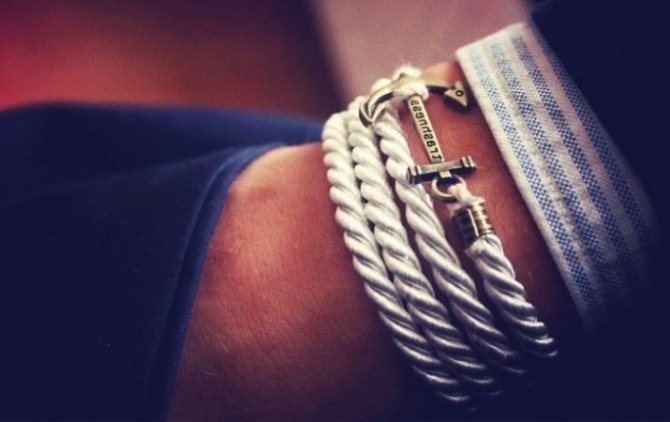

These little surprises inspired Ilya to create a nautical bracelet with a miniature anchor. A little later he founded his own brand called Tricksy. Today, you can find these original accessories in many stores in different cities, and online stores.
Today, there are many different types of such bracelets. Choosing the ideal variant depends only on your desires.
It is worth noting the unobtrusive nature of such bracelets. They do not look heavy and heavy, which allows them to fit harmoniously into many ladies' images.
Trendy accessories can be not only single, but also double or triple. Such products are complemented not only by small anchors, but also by other decorative details in a nautical vein. They can be decorated with a helm or a compass.
How to wear and with what to combine
Anchor is quite a bright symbol, so it is good in a solo performance. Such a pendant does not need a saturated visual background - a miniature earrings or a concise bracelet will suffice. The more interesting and unusual the pendant itself, the less noticeable will be other jewelry and accessories in your image.
Anchor can be worn in combination with other pendants. This will give the jewelry additional symbolism:
- With a heart - stability of romantic feelings;
- with a cat - protection from ill-wishers;
- with a snake - good health.
The pendant can be worn with the anchor chain, but not only. It combines harmoniously with other kinds of braids, as well as silk and leather laces.
Such a familiar and familiar symbol the anchor has appeared as a sea emblem since the first centuries of our era. It is believed that the symbolic meaning of the amulet acquired from the ancient Egyptians and meant the universe, the mystery of marriage and peaceful family life. According to another version, the creator of the first anchor may be the Phrygian king Midas.
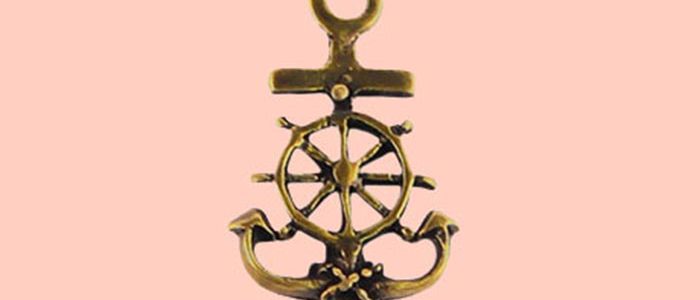

Advantages and disadvantages
Among the obvious advantages of the classic anchor weave is worth noting:
- Concise simplicity, promoting compatibility with any bow and a wide range of pendants.
- Wide variability. After reading this publication, you're probably convinced that anchor weave can take on many different guises.
- Easy and inexpensive to fit. If the chain is too long, they will instantly remove a few links in any jewelry workshop right in front of you.
- Repairability. The chain is easy to return to its original form - no trace of damage will remain.
- Easy care. The simpler the weave, the easier to clean the chain, and the spaces between the links are not so intensively soiled.
Among the disadvantages of the basic weave we can mention only some external simplicity and low durability, which is more than compensated by a simple and fast repair. After all, jewelry stores offer a lot more reliable and pretentious descendants of the simple laconic anchor!
Anchor. Symbol, history, species, legends.
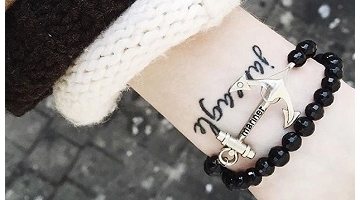

Why is an anchor called that? The Russian word "anchor" was transformed from the Old Russian "anchor", which, in turn, came from Ancient Greek. In fact, it came from there to other European languages as well. In English an anchor is called anchor (anchor), in Italian - apsoga (anchor), in French - ancre (anchor), in German - anker (anchor), etc. The root "anc" literally translates as "hook," "crooked," or "curved. That is, the word "anker" or "anchor" means "having a curvature" or "having a curvature."
What are anchors for?
Before the invention of the steam engine, anchors were not only needed to hold a ship in place. Special anchors (verses) helped to bring a ship off the shoal and were the only way to navigate rivers against the current in windless weather.
Depending on their purpose, modern anchors are divided into four types: 1. Anchors are used directly to hold a ship at anchorage. They are placed in the bow. They can weigh up to 30 tons and are used to hold huge aircraft carriers. 2. Auxiliary anchors are placed on the stern and are designed to prevent the ship from turning when it is anchored. 3. "Dead" anchors anchor floating objects to keep them in one place for a long time (lighthouses, buoys, drilling vessels). 4. Anchors are used to hold specialized watercraft (e.g., a technical fleet vessel for dredging or mining).
Basic Lessons: Anchor Design
Before you dive headfirst into the fascinating history of the anchor and understand their diversity, you need to master a little theory. It's easy! So, what does an anchor consist of? Conventionally, the entire construction can be divided into 4 functional parts: 1. Spindle - the basis of the whole construction. 2. The horn (ring) and the bracket secure the anchor to the anchor chain or rope. 3. The horns are responsible for "burrowing" and holding in the ground. The horns end in paws. The tip of the paw is called the toe. The horns are attached to the spindle in two ways: fixed (trend) or hinged in the box. 4. The rod is present in the design of only some types of anchors. Its role is to invert the anchor on the bottom immediately after diving. This is to prevent the anchor horns from lying horizontally on the bottom; otherwise they will not be able to hook on the ground. The rod is perpendicular to the spindle and horns.
History of the anchor
The history of the anchor is much longer, deeper and more interesting than one might imagine. The fact is that, independently of each other, different civilizations have solved the vital question of how to anchor a ship in the water in different ways. We offer a brief chronology of important events in the history of the anchor:
1. Anchor stone. The first anchor in history was a stone with a vines (and later a rope) tied to it. Over time, a number of improvements naturally emerged: 1) A groove in the stone to keep the rope from slipping. 2) Holes in the stone for the same purpose. 3) Braided baskets, nets, bags, decks in which the required number of small stones were loaded depending on the strength of the wind and the current. 4) Additional holes in the stone through which wooden stakes sharpened on both sides were passed. The weight of the stone made these stakes cling to the ground, increasing the anchor stone's holding power. Many other variations of the first anchor were invented by different peoples of the world.
2. A wooden one-horned anchor. These were essentially wooden hooks made of hard, water-sinking wood. Such anchors held vessels much more securely than all varieties of anchor stones. But there was one problem: a single-horned anchor would sometimes lie flat and not catch on the ground. So the position of "anchor diver" appeared: he had to dive after the anchor and guide the anchor with the horn into the ground. 3. A two-horned anchor with a rod. The "anchor diver" could only be useful in shallow water. Therefore, it was necessary for the anchor, under the pulling force of the rope, to hook itself into the ground. The anchor then acquired a design that is still considered classic today: a spindle, 2 horns and a rod. Combination anchors - wooden anchors with stone rods - were also common.
4. Iron anchor. With the development of blacksmithing skills came iron anchors, which became even more reliable. Such an anchor preserved the classical form achieved by the engineering thought of the previous historical stage. Anchor became one of the basic products of blacksmiths along with sword, axe, plough. 5. The classic anchor with legs. This is the stage where the anchor acquired legs to make it easier for the horns to dig into the ground. And so the anchor got its final, classic, familiar to us look, which has not changed for many centuries.
And now for the most amazing fact: all the described metamorphosis that has occurred to the anchor design, occurred before our era! Until the middle of the 19th century, there were no major changes in the evolution of the anchor. Anchor species
More than 5000 types of anchor are known today. This is the number of patents and inventor's certificates of improvement that have been granted throughout history. The classical anchor is called the "admiralty anchor". It got its name in 1821, when it was approved by the British Admiralty for use in the Navy. It holds the ship firmly in place. But it is very cumbersome: it is dangerous to suspend it at the side, so it is necessary to remove the stem and roll it over the side. In addition, if the direction of the current or wind changes, the chain can wrap itself around the paw and the anchor can come loose. Because of the imperfect design of the admiralty anchor, more and more modernizations of this important device began to appear. Developers moved in several directions: 1. A collapsible anchor: for ease of storage and operation. 2. Anchor with swinging horns: to increase holding power and make it easier to sink into the ground. 3. Attempts to remove stem: for ease of storage and operation. 4. Changing the shape, length and location of the tines: for easier "burrowing" into the ground, increasing the holding force, matching different types of soils.
One of the most famous anchors of alternative design was the Hall anchor - with flat oscillating legs. It is famous for its quick "pick up" of the ground. But it is not strong enough to hold a ship in heterogeneous ground. The Danforth anchor, on the other hand, has flat tines that are close to the spindle, and the rod is at the bottom. With such an anchor, the vessel is securely anchored in non-solid ground, even if it is turned 360°. There are many kinds of anchors used in shipping, named after their creators. There are other curious anchor designs. There are even floating anchors that hold a ship with its bow to the wind, preventing the elements from turning it sideways against the wave and nailing it to the shore.
What does an anchor symbolize?
Anchors were often emblazoned on coins, medals, and coats of arms. Roman emperors, Russian princes, sailors, and discoverers gave great meaning to the image of the anchor. Here are the main meanings:
- A symbol of hope. Ancient mariners considered the sea a realm of darkness and the unknown. It was the anchor that often saved their lives. That is why they literally entrusted their fate to it. The making of each piece ended in a magnificent rite. And when the time came to use the anchor, it was not dropped, but carefully lowered. In Latin there is an ancient expression: "Sacram anchoram solvere", which literally means "Save yourself with a sacred anchor", i.e. to avoid imminent destruction.
- A symbol of seafaring, distant wanderings, voyages, maritime trade.
- Symbol of the joy of returning home after a long and hard wanderings in foreign lands.
- Symbol of stability, peace and security.
- Symbol of resilience and the ability to resist the oncoming winds, currents, terrible storms, unpredictable elements, and not to stray from the intended path.
*** To summarize the significance of the anchor in the history of navigation and its symbolic meaning, here are the words of the English classicist and ship captain Joseph Conrad:
"There is no other object so disproportionately small compared to the immense task it performs!"
21.03.2017
The Meaning of the Pi Yao Bracelet
Now let's move to the Celestial Empire and take a closer look at the Pi Yao bracelet. Such bracelets are usually assembled from beads chiseled from semi-precious or ornamental stones.
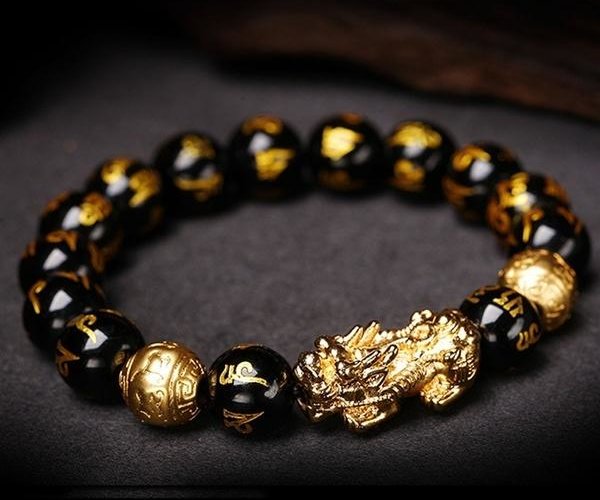

The central element is a cast metal or carved stone figurine of Pi Yao, a kind of exotic mixture of a lion and a dog and sometimes a dragon and a bull. A simplified version is the wooden Ji beads with his stylized image.
In Chinese ancient legend, Pi Yao is the beloved son of the Celestial Dragon, who was deified in the Celestial Empire. This mythological character is said to be able to inhabit any of the four elements.
It not only protects the wearer from evil forces, but also grants wealth and good luck.


